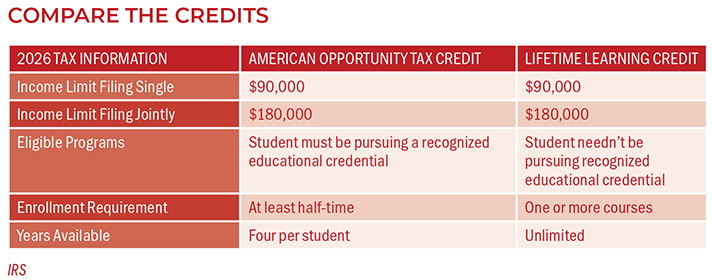SUBSCRIBE
Enter your Name and Email address to get
the tax guide delivered to your inbox.
Please include name of person that directed you to my online tax guide so I can thank them personally.


Anh Le, CPA, CGMA, EA, MBA
12400 Olive Blvd, Suite 320
Creve Coeur, MO 63141
Phone: 314-624-0350
Fax: 314-624-0351
Email: anh@anhlecpa.com
Website: www.lecpafirm.com

"Trump Accounts"
Introduced in OBBBA, these are government-funded investment accounts designed to help children build wealth from birth. Children born between January 1, 2025, and December 31, 2028, who are U.S. citizens and have a Social Security number, are eligible to receive a one-time $1,000 deposit from the U.S. Treasury to start the account. Children born outside these four calendar years are also eligible for an account, but they won't receive the $1,000 in government seed money.
Parents, grandparents, and other individuals can make after-tax contributions of up to a combined total of $5,000 per year to each account. Employers may also contribute up to $2,500 a year to accounts for their employees' dependents. Any employer contributions also count toward the overall $5,000 cap. The contributions grow tax-deferred until withdrawn. Account investment options are limited to mutual funds* or exchange-traded funds that track a qualified index, such as the S&P 500.
What's the education planning tie-in? Beginning the year the child turns 18, they can make penalty-free withdrawals for qualified educational costs. The child will incur regular income tax on earnings and tax-free contributions from the government/employers. Still, all after-tax contributions made by parents and others can be withdrawn tax-free. After age 18, the account functions similarly to a Traditional IRA, with continued tax-free growth and the ability to withdraw funds for any purpose starting at age 59-1/2.
Opening an account makes sense if your child is eligible for the $1,000 seed money. It may also be worth considering if your employer is willing to contribute to your child's account. Accounts can be opened beginning July 4, 2026. More guidance from the Treasury is expected before then.
Starting in 2026, families can withdraw up to $20,000 per year per beneficiary from 529 plans for qualified K-12 expenses—up from the previous annual limit of $10,000. Qualified expenses now include not only tuition, but also curriculum and instructional materials (such as books or online courses), tutoring by licensed or expert instructors, dualenrollment fees, standardized test (e.g., SAT/ACT) fees, and educational therapies for students with disabilities. Distributions may now be used tax-free for training registered under the Workforce Innovation and Opportunity Act, apprenticeships, and state-licensed certifications (specific qualifications may apply). Qualified expenses include tuition, fees, books, supplies, and exam fees in career training and continuing education.

Student loan holders who qualify by income may still deduct up to $2,500 from their AGI in qualified education loan interest. This deduction phases out between a MAGI of $85,000 - $100,000 for individuals and $170,000 - $200,000 for married taxpayers filing jointly. Parents who help a child pay loans generally can't take the write-off. But if the child meets the MAGI qualifications and isn't eligible to be claimed as a dependent, they may claim the interest deduction.
Also, if your employer offers a qualified educational assistance program, you can use it to pay down up to $5,250 this year and later. Payments are excluded from your wages for income-tax purposes.
*Investors should read the prospectus and consider the investment objectives, risks, charges, and expenses of the fund before investing. Because mutual and exchange-traded fund values fluctuate, redeemed shares may be worth more or less than their investment. Past performance won't guarantee future results.
**Certain requirements may apply. Before investing, read the program offering statement and consider the investment objectives, risks, charges, and expenses associated with 529 plans. 529 Plans are not guaranteed by any state or federal agency. Consider whether the investor's or beneficiary's home state offers 529 plan-related tax or other benefits. Discuss 529 tax rules with your tax professional.
Enter your Name and Email address to get
the tax guide delivered to your inbox.
Please include name of person that directed you to my online tax guide so I can thank them personally.
Enter your Name, Email Address and a short message. We'll respond to you as soon as possible.
Anh Le, CPA and LTM Marketing Solutions, LLC are unrelated companies. This publication was prepared for the publication’s provider by LTM Marketing Solutions, LLC, an unrelated third party. Articles are not written or produced by the named representative.
The information and opinions contained in this web site are obtained from sources believed to be reliable, but their accuracy cannot be guaranteed. The publishers assume no responsibility for errors and omissions or for any damages resulting from the use of the published information. This web site is published with the understanding that it does not render legal, accounting, financial, or other professional advice. Whole or partial reproduction of this web site is forbidden without the written permission of the publisher.